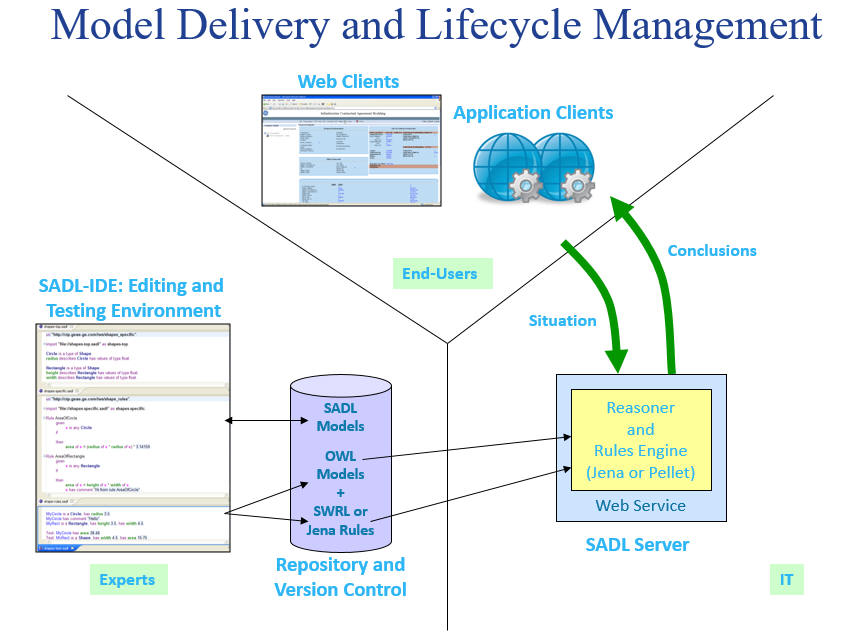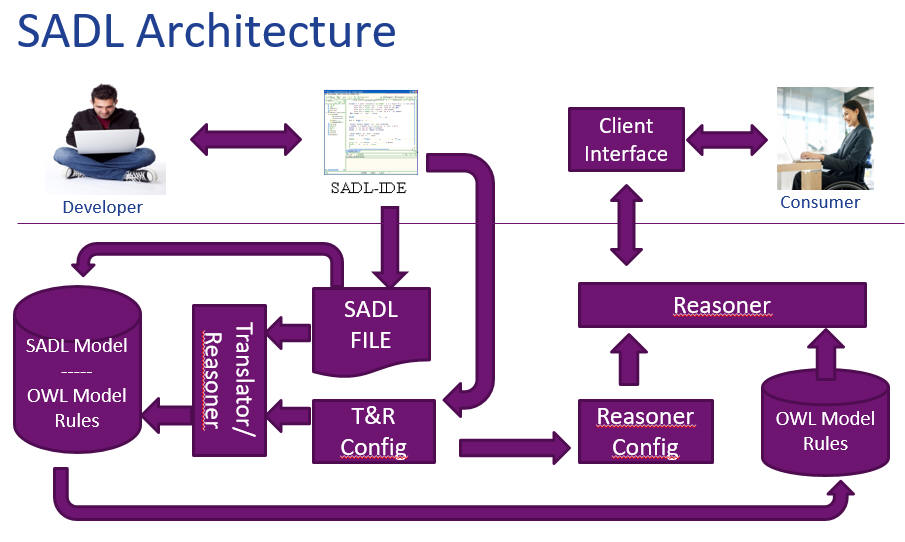
SADL is both a controlled-English language and an integrated development environment (IDE). The IDE provides an editing environment in which to create, test, and maintain OWL-based knowledge bases. However, it is often the case that the actual application of the knowledge base--its achievement of its purpose--requires access to the knowledge in a very different environment from the one in which it was developed. For this reason SadlServer exists--to provide access to knowledge bases as a service. Figure 1 illustrates these two ways of accessing knowledge.

Figure 1: Knowledge Base Development and Delivery
Figure 1 shows a third role besides expert developers and end users--the IT folks who standup the server environments that provide the knowledge as a service (KaaS).
The knowledge base created and maintained in the SADL IDE consists of OWL models and rule files in some target representation. These are not SADL-dependent and can be used by any compatible software. The unique aspect of SadlServer is that it takes the knowledge base exactly as created in the SADL IDE (the OwlModels folder in specific) and delivers it to the server environment with all of the configuration information necessary to identify what reasoner to use and how to configure it. This is illustrated in Figure 2.

Figure 2: A Knowledge Base's OWL and Rules Content and the Configuration Information Passes from the IDE to the Server (on the Right).
SADL is architected to support any reasoner that is wrapped in a Java API conforming to the IReasoner Interface. To persist knowledge (OWL models and rules) in a format that can be consumed by that reasoner, a corresponding translator conforming to the ITranslator Interface class must also be provided. The translator takes input in the SADL in-memory Intermediate Form and outputs the knowledge in the format required by the reasoner. A reasoner and a compatible translator are referred to as a reasoner/translator pair. Because both the reasoner and the translator are invoked through the Java ServiceLoader, additional reasoner/translator pairs can be added to the SADL IDE by adding them to the Java classpath. The configuration file contains the information necessary for the server environment to load the reasoner and translator. More detail on this plug-in architecture is shown in Figure 3.
Figure 3: The Reasoner/Translator Plug-in Architecture.
It is highly desirable to maintain the knowledge base in some kind of source code or version control system and Figure 3 shows such a system system between the development and server environments. Of course this is not required but no serious knowledge development effort should ever proceed without this safeguard on loss of artifacts.